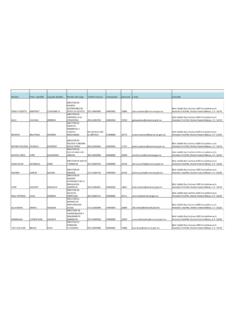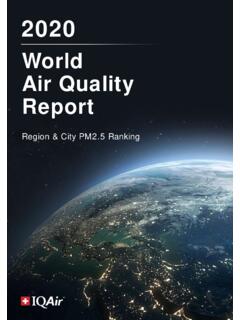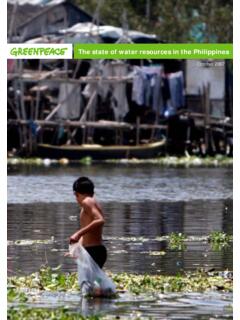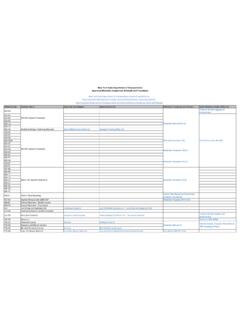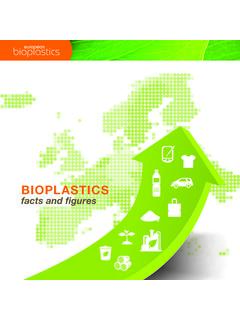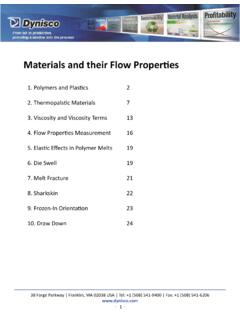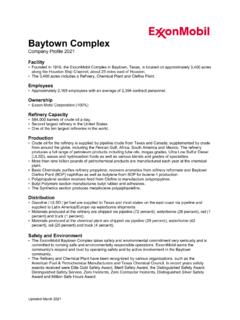Transcription of #JPEFHSBEBCMF1 MBTUJDT #SFBLJOH%PXOUIF'BDUT
1 Greenpeace is an independent campaigning organization that uses peaceful protest and creative communication to expose global environmental problems and to promote solutions that are essential to a green and peaceful future. Published December 2020 by Greenpeace East Asia Copyright 2020 Greenpeace W : Dr. Molly Zhongnan Jia C : Ye Zhang Disclaimer: This report was produced by Greenpeace East Asia. The author takes full responsibility for the report's content and conclusions. While the experts consulted during the drafting process have provided input on the development of this report, their participation does not necessarily imply endorsement of the report's content or conclusions. Citing of trade names or commercial processes does not constitute endorsement.
2 Acknowledgements: Special thanks to Kathryn Miller, Erin Newport, Qianru Ma, Zizhu Chen, and Enzo Favoino. Contents 1 What is degradable plastic? .. 5. 2 The biodegradable plastics industry .. 7. How biodegradable plastics are made 7. Who is making biodegradable plastics? 9. Where biodegradable plastics are used 10. An uncertain future for biodegradable plastics 11. 3 Agricultural feedstock and the supply chain .. 13. 4 Safe and toxic-free production .. 17. 5 How are biodegradable plastics disposed of? .. 19. Biodegradable standards and certification systems 19. Consumers need clear information and guidance 20. Are there enough compost facilities to treat biodegradables? 21. Other end-of-life options for biodegradable plastics 24. 6 How policy makers regulate biodegradable plastics.
3 27. Europe 27. The United States 29. China 30. 7 Is eco-friendly packaging really biodegradable? .. 33. Fast-Moving Consumer Goods Companies (FMCG) 33. Retailers 33. E-commerce 37. 8 Recommendations .. 39. I APPENDIX. 1. What is degradable plastic? Marine plastic litter has drawn society's attention to the excessive use of disposable single use plastics (SUPs) 1 , and its negative impact on the environment and human health. In addition, the rapid increase of SUPs globally is accelerating climate change due to the amount of greenhouse gas emissions from its entire lifecycle, according to a 2019 report [1] . The global annual usage of plastic exceeded 300 million tonnes in 2015, and nearly half was used to make SUPs [2] , which are designed to be used for a short time before being thrown away.
4 Policymakers across the globe have employed various national and regional regulatory approaches to address plastic pollution, to which SUPs are a major contribution. By 2018, the United Nations summarized that 127 countries have introduced legislation to regulate plastic bags, 27 countries have banned specific SUPs, materials or production levels, and 63 countries have mandates for extended producer responsibility for SUPs [3] . Of the specific plastic bag material composition requirements, 35 have given the green light for degradable plastics, incentivized the production, import, or use of oxo-biodegradable, biodegradable and/or compostable SUPs. Different types of degradable plastics have been highlighted in the mainstream media since then, often as an exciting breakthrough material to solve the plastic crisis.
5 China is one of the countries with the largest plastic production and consumption in the world, and announced a ban on non-degradable SUPs in major cities by the end of 2020 and across the country by 2025, although degradable SUPs are exempt from the ban [4] . Once again, degradable plastics are promoted as a green alternative. However, what is degradable plastic? What are its environmental impacts? Do we need to develop an alternative waste disposal strategy for disposable plastics? Can we really tackle plastic pollution by switching to degradable plastic? Many questions still need to be addressed before accepting degradable plastic as an eco-friendly solution to conventional plastic. Considerable confusion exists in the field of degradable plastic, and different terms are often used incorrectly in public communications.
6 The two general mechanisms for 1. Single use plastics (SUPs) include different types of products, such as, plastic bags, food and bever- age packaging, straws, containers, cups and cutlery, which are typically used once before being thrown away. 6. degradable plastics are (i) photo- and oxo-degradation and (ii) biodegradation [5] . Photo- degradable and oxo-degradable plastics are typically made from conventional plastics with some additives, which helps the products to fragment rapidly under ultraviolet radiation (sunlight) and oxygen [6] . The theory was that plastic would be degraded into carbon dioxide and water by microorganisms. However, studies have shown that photo- and oxo- degradable plastic does not biodegrade within a reasonable time period 2 , but leads to the accumulation of incompletely degraded plastics in the environment.
7 Biodegradable plastics, on the other hand, consist of various polymers from different origins with different chemical structures and properties, and each requires specific conditions to fully biodegrade. There are more than 20 kinds of biodegradable plastics, including polymers from natural biomass, polymers produced from bacterial productions, polymers chemically synthesized using agricultural resources, and polymers chemically synthesized using fossil-fuel resources (for examples, see Table ). The different types of degradable plastics, even photo- and oxo-degradable plastics, are often marketed as green , eco-friendly and natural , or generally described as biodegradable materials. Another term that is often used is bioplastic , which includes bio-based plastics and biodegradable plastics, but the use of different names and the lack of clear terminology can be confusing for consumers.
8 Bio-based plastics are made fully or partially from biological resources, and may not necessarily be biodegradable nearly half of the bioplastics produced are not biodegradable. Despite the fact that these terms have been used for more than a decade, most consumers would presume a material is biodegradable when it reads derived from plants [8] . In an effort to solve the plastic crisis, a number of governments and big brands have favored degradable plastics, especially biodegradable plastics. The use of biodegradable plastics is predicted to increase rapidly, with an expanding range of applications. It is more urgent than ever to properly discuss the emerging issues concerning the use of biodegradable plastics. Greenpeace has reviewed the production and application of biodegradable plas- tics, how they are managed in different parts of the world, and how they are marketed by big brands.
9 A comprehensive understanding of bioplastics will help us evaluate whether the use of biodegradable plastics have any positive impacts, and how they should be regulated while society is transitioning towards a circular economy. 2. Defining a reasonable' time frame might differ from product to product depending also on the use of the product and its impact on the environment; the environmental impact is correlated with the time taken for complete breakdown of the polymer. [7]. 2. The biodegradable plastics industry How biodegradable plastics are made Global production capacity for bioplastics reached million tonnes in 2019, of which is biodegradable plastics, roughly millions tonnes [9] . Polylactic acid (PLA) is prob- ably the most well known biodegradable plastic, but more than 20 groups of biodegradable plastic polymers exist.
10 Of those 20, only 3 groups are produced on a commercial production scale: (i) starch blends; (ii) PLA; and (iii) polybutylene-based polymers, which include PBS. (short for polybutylene succinate) and PBAT (short for polybutylene adipate terephthalate), which are mostly fossil fuel based. Nearly 95% of production capacity for biodegradable plastics is among these 3 groups. The production capacity of starch blends was approximately 450 thousand tonnes in 2019. Starch is inexpensive and readily available compared to other natural polymers with additional biodegradability, making it a popular material to develop biodegradable plastics. However, due to its poor water resistance and low strength [10] , starch is often blended with other polymers to achieve needed mechanical properties.
